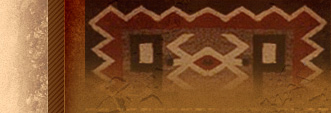 |
 |
| |
Burning Through the Roots, Part 2
|
|
| |
East is the place of new beginnings -- birth and rebirth, spring, childhood. Any time you learn something new, begin a new project, or face life with renewed hope, you are in the East. The color is the yellow of the morning sun. Intellectual ways of knowing and learning are accomplished through thinking processes like reason, logic, analysis, pattern recognition, and generalization. What I am doing right now to explain the Circle and the different ways of knowing to you is "Intellectual." And, as you can see, it's the place you generally begin learning about something new. Learning and knowing that takes place at high cognitive levels, in the educational psychology sense, is also Intellectual. Western culture preferentially values information acquired through processes of Intellectual learning and knowing. The so-called "Scientific Method" is frequently considered the type methodology for collecting information through Intellectual ways of learning and knowing, although its format, relevance, and real applicability are hotly debated by scientists and philosophers alike.
The South is the direction from which summer rides up on warm winds during the months when the corn ripens (Footnote 1). This is the time of fertility, maturity, and productivity, so South is the red color of life's blood. Experiential ways of knowing and learning about the natural world include sensory information from our eyes, ears, skin, nose, and mouth, as well as the proprioceptive information we receive from our own bodies and the ways they move in space. Science, the poster-child discipline for Intellectual ways of knowing and learning, uses Experiential ways of knowing to acquire sense-data. Some studies of crime victims suggest that the sense of intuition we commonly call "feel" may also be Experiential (somatic).
West, in much of North America, is the direction of storms. It's black because the thunderheads that tower blindingly white into skies blue as sapphire have bases flat and dark as slate. Lightning flickers restlessly in the stillness before the storm, followed by rain, hail, strong winds, and sometimes tornadoes. The violence of thunderstorms is dangerous and frightening, but the rain they bring fills the rivers and makes the land bloom. Without them life would literally not be possible. This is the key feature of the West: it is a place of double-edged power beyond imagining, a direction associated with awe and paradox. It reminds us that our lives depend utterly on things immeasurably larger than ourselves and far beyond our control. The West is therefore the place of Spiritual ways of learning and knowing.
Winter's North winds bring snow and deep silence to many parts of the land in North America. Some creatures burrow down beneath the frost and sleep. Flowers and grasses die and wither, and hardwood trees drop their leaves and become dormant. Humans gather indoors around warm fires, sharing stories and dreaming dreams. These are times of deep quiet, of rest and renewal, of death in which new life stirs unseen -- seeds in frozen ground beneath the snow. In this silence, stories grow like flames of a warming fire and are shared from person to person. Dreams fall like flakes of snow onto the shelter over a human heart. This is the direction of Mythic ways of knowing about the world -- art, music, story, and dream. Its color is the white of snow itself.
|
|
|
|
|
|
 |
|
|

